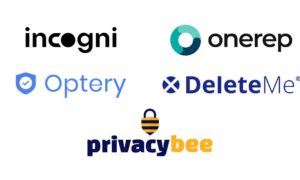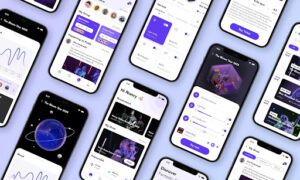The Rise of Generative AI is shaping the future of work, creativity, and innovation faster than any tech trend in recent memory. In 2026, generative models have grown smarter and more practical, and they have found their way into nearly every major industry. They help teams create content, analyze data, build software, design products, and even make crucial business decisions. What once sounded like a futuristic dream has become a tool people use every single day.
Today’s learners, creators, and researchers rely on platforms like Aitude to explore AI tools and stay updated with tutorials and insights that help them understand this rapidly evolving field. If you want to explore AI tools that support learning and innovation, you can visit Aitude at https://www.aitude.com/ai-tools/.
As generative AI continues to mature, it brings major opportunities along with realistic challenges. Let’s dive into the trends shaping it in 2026.
What Generative AI Really Means in 2026
Generative AI refers to a class of artificial intelligence that creates original content by studying patterns from massive data sets. It produces text, images, videos, audio, 3D models, ideas, and even working software code. These systems don’t just copy existing data. They generate something new, and they keep getting better each year thanks to improved training techniques and more efficient computing.
Popular tools in 2026 include large language models for text, multimodal systems for images and audio, code-generation platforms for developers, VFX tools for media studios, and simulation engines for scientific research. These tools help individuals and companies save time, reduce costs, and experiment more freely.
Opportunities Created by The Rise of Generative AI
Generative AI increases productivity across industries
Businesses everywhere use generative AI to level up productivity. Teams can produce reports, emails, scripts, proposals, and strategic plans in a fraction of the usual time. Even tasks like customer support, keyword research, competitive audits, and performance summaries now happen faster.
In a world where speed plays a major role, generative tools help companies focus on strategy while AI handles the heavy lifting. Many organizations report that AI reduces content creation time by more than 60 percent and boosts output without hurting quality.
Designers and creators generate ideas more easily
Creative teams now use generative AI as a brainstorming partner. Designers generate layout variations, test new color schemes, experiment with logo styles, and create visuals faster. Video creators generate scenes, effects, and characters. Writers develop polished first drafts and refine their ideas.
Instead of staring at a blank screen, creators start with multiple AI-generated concepts and then shape them into something powerful. This approach speeds up the creative cycle and encourages experimentation.
AI helps businesses make smarter decisions
Generative AI doesn’t just create content. It also helps companies make important decisions by analyzing large data sets and generating insights. Businesses use AI to identify patterns in consumer behavior, forecast sales, map market trends, and recommend strategic actions.
Tools can now summarize long reports, turn data into visuals, and explain patterns in plain language. This kind of AI-powered decision support helps leaders move quickly and confidently.
Technology becomes easier for everyone
One of the biggest success stories of generative AI is how it reduces the technical barrier for almost everything. Students build apps without knowing complex code. Small businesses create marketing materials without hiring large teams. Freelancers deliver professional-grade work at scale.
Platforms like Aitude help users discover, compare, and experiment with the latest AI tools without feeling overwhelmed. You can explore more at https://www.aitude.com/ai-tools/. Generative AI gives beginners a solid starting point and helps experts work faster.
Businesses create new revenue streams
New business models have emerged thanks to generative AI. Companies now offer services such as AI-generated content, automated customer support systems, AI-driven advertisement engines, voice synthesis services, and digital assistants for niche sectors.
Startups sell generative AI-powered tools for real estate marketing, product photography, virtual staging, financial modeling, and even parent–teacher communication systems. The market is filled with innovation as entrepreneurs look for problems AI can solve.
Real-World Use Cases of Generative AI in 2026
Content creation becomes faster and more accurate
Marketing teams use generative AI to produce blogs, ad copy, newsletters, social media posts, product descriptions, and landing pages. Many businesses report significant increases in both engagement and consistency. AI research tools help writers understand user intent and choose relevant keywords, boosting SEO performance.
Generative AI also supports localization by translating content in a human-like tone, making global expansion easier.
Developers write code with AI assistance
Software development has changed dramatically. Developers generate blocks of code with natural language prompts. They fix bugs, document systems, and test applications with AI support. These tools help them finish large tasks faster and reduce human error.
In 2026, AI models can even analyze older systems and recommend modernization strategies. Teams spend more time on architecture and less time on manual coding.
Healthcare improves accuracy and speed with AI support
Generative AI models analyze images, lab reports, and patient histories to support diagnoses. They help with drug discovery by simulating molecular structures and predicting outcomes. Hospitals use AI-generated clinical summaries to streamline administrative tasks.
Researchers benefit the most. They use generative models to explore genetic patterns, compare treatment options, and develop new medical theories.
Finance moves toward AI-powered automation
Banks, financial institutions, and fintech companies use generative AI to generate investment reports, simulate risk models, detect suspicious activity, and respond to customer queries. AI monitors trends and provides prediction insights that help investors make smarter choices.
Chat-based AI assistants help customers handle tasks like card blocking, account information, and loan queries without long wait times.
Education evolves with personalized AI tutors
Generative AI tutors create lesson plans tailored to each learner. They answer questions instantly, explain tough concepts, and help students study at their own pace. Teachers use AI to prepare worksheets, quizzes, summaries, and teaching materials.
Students benefit from simplified explanations and personalized learning paths. Schools report higher engagement and better outcomes.
Entertainment and gaming expand creatively
Generative AI produces characters, scripts, music tracks, 3D worlds, and animated scenes. Gamers enjoy faster game development cycles and more immersive environments. Movie studios use AI for pre-visualization, script editing, and special effects generation.
AI-generated influencers and virtual hosts have also become common in entertainment.
Challenges Linked to The Rise of Generative AI
Ethical concerns and fairness issues
Generative models learn from human data, which means they sometimes repeat biases or unrealistic assumptions. Companies must keep monitoring their models and updating training data to minimize errors and create fair outputs.
Misinformation and synthetic content issues
The rise of deepfakes created by AI raises concerns for governments and social platforms. Fake images, videos, and audio clips can manipulate opinions or mislead people. In 2026, stricter verification systems and AI watermarking tools are becoming standard.
Workforce changes and automation pressure
Some jobs face pressure because AI can automate basic tasks. Entry-level writing, design, and data analysis tasks are now handled by AI in many companies. However, job opportunities also grow in AI training, model supervision, ethics, prompt engineering, and AI workflow management.
Data privacy and security risks
AI systems require large datasets, and if they are not handled properly, they may expose sensitive information. Organizations invest in secure data practices, audit trails, and AI governance systems to protect user information.
Over-reliance on automated systems
When teams trust AI too much, they may overlook errors or miss important details. Human review is still necessary for safety, quality, and accuracy.
Future Trends Beyond 2026
AI continues to grow quickly. Some key trends include:
Multimodal creation where text, images, audio, and video generation combine into one workflow.
Autonomous systems in robotics, transportation, and logistics that rely on generative reasoning.
Personalized experiences across apps, websites, and education platforms.
Stronger regulations for ethical use and transparency.
AI-human collaboration where AI becomes a creative partner rather than a replacement.
Conclusion
The Rise of Generative AI has changed how people learn, create, and work. Its opportunities are tremendous, from boosting productivity and creativity to reshaping entire industries. It offers new business models, advanced research tools, and smarter decision-making systems.
At the same time, society must address challenges like ethics, misinformation, job shifts, and data privacy. Organizations that adapt, invest in training, and integrate AI responsibly will lead the future.
If you want to explore AI tools that help you innovate, learn, and stay ahead, you can explore, learn, and experiment with advanced tools at Aitude: https://www.aitude.com/ai-tools/.

































